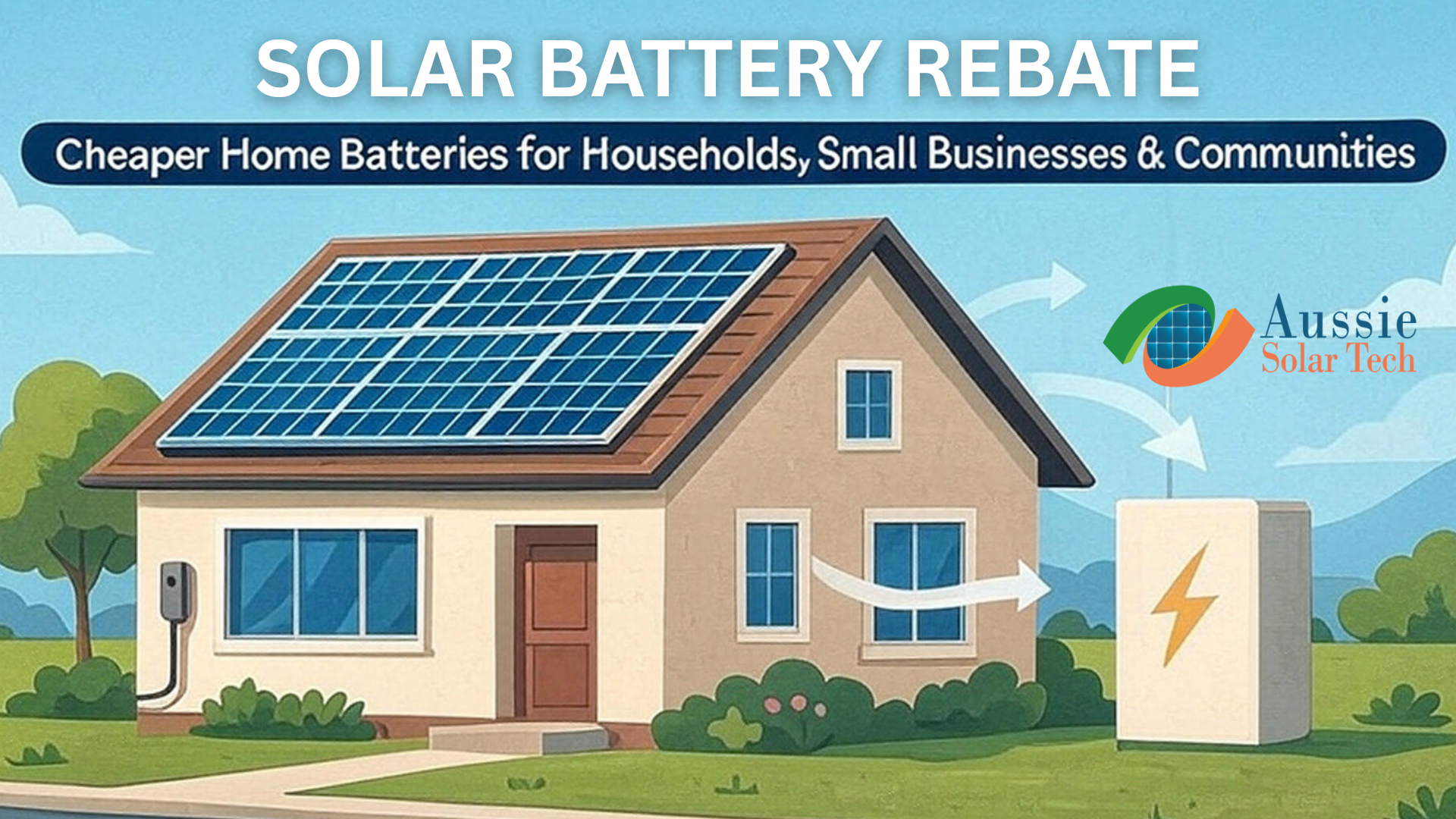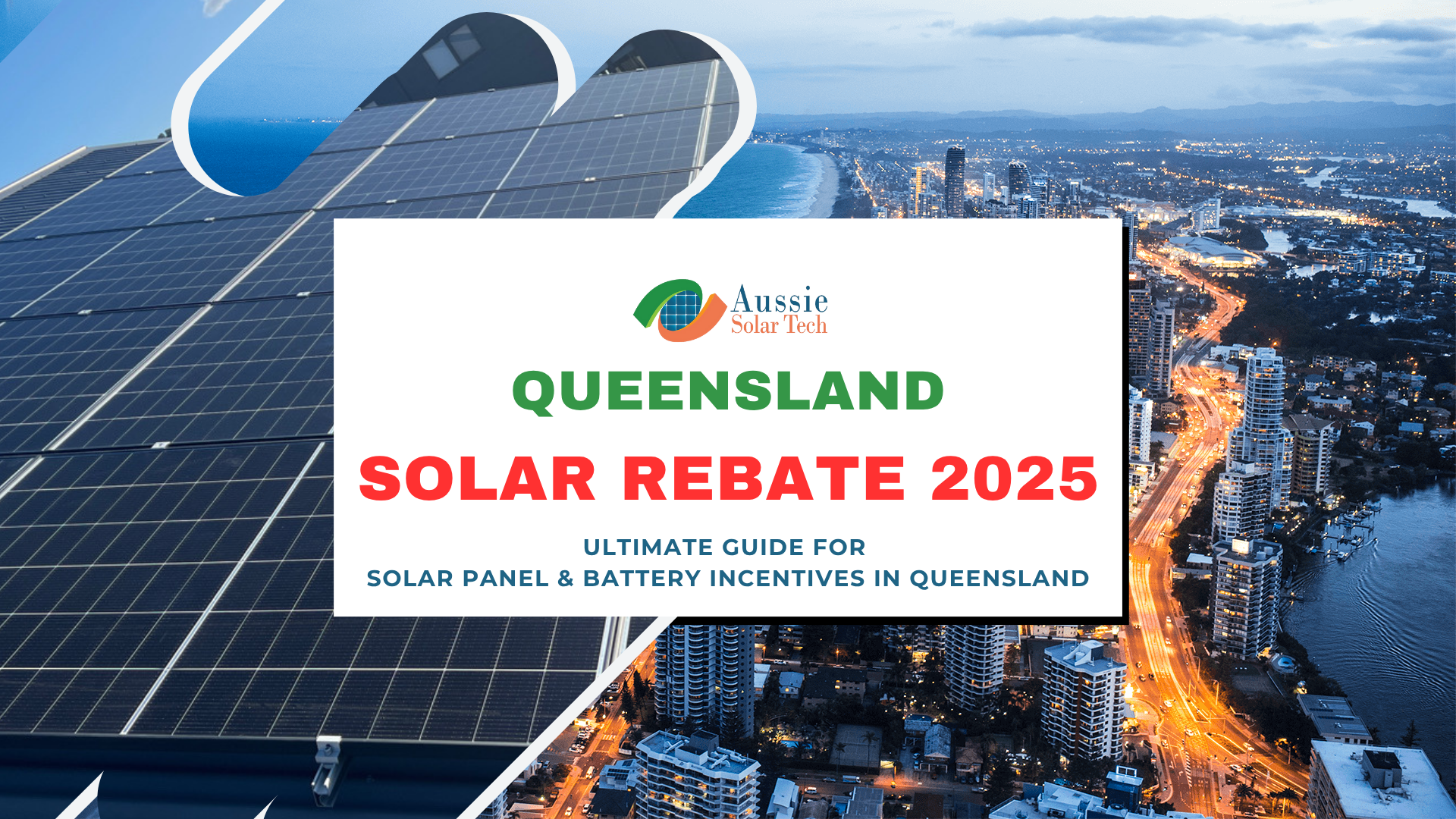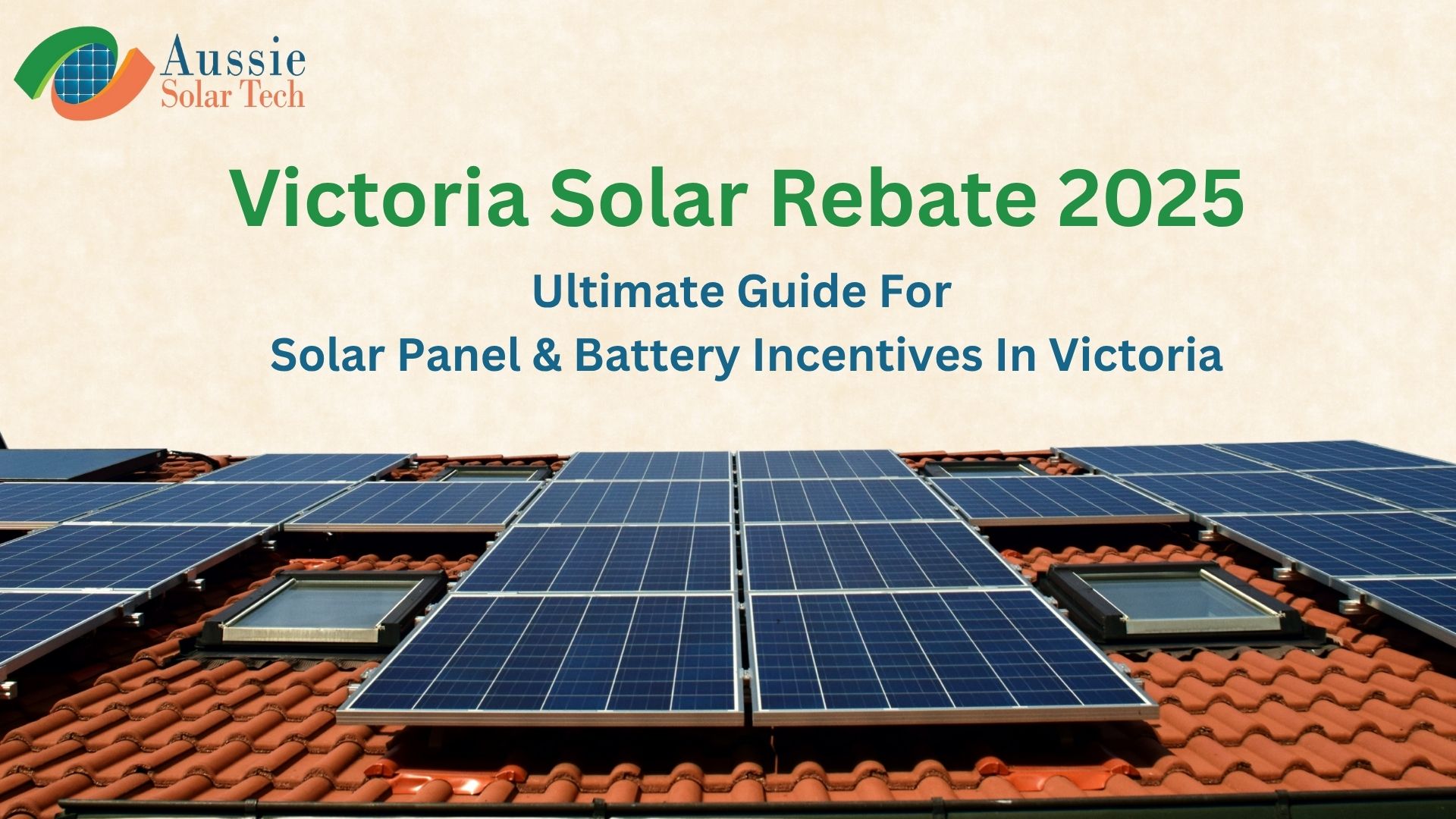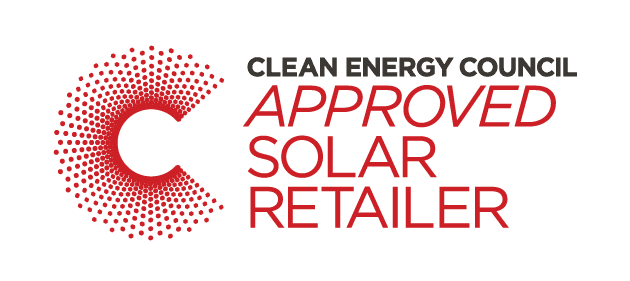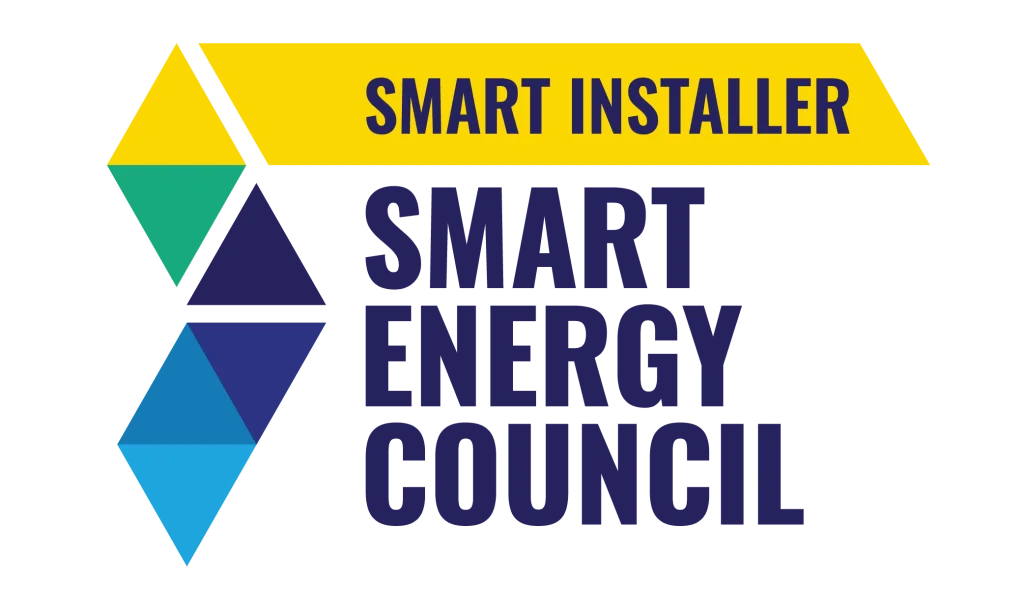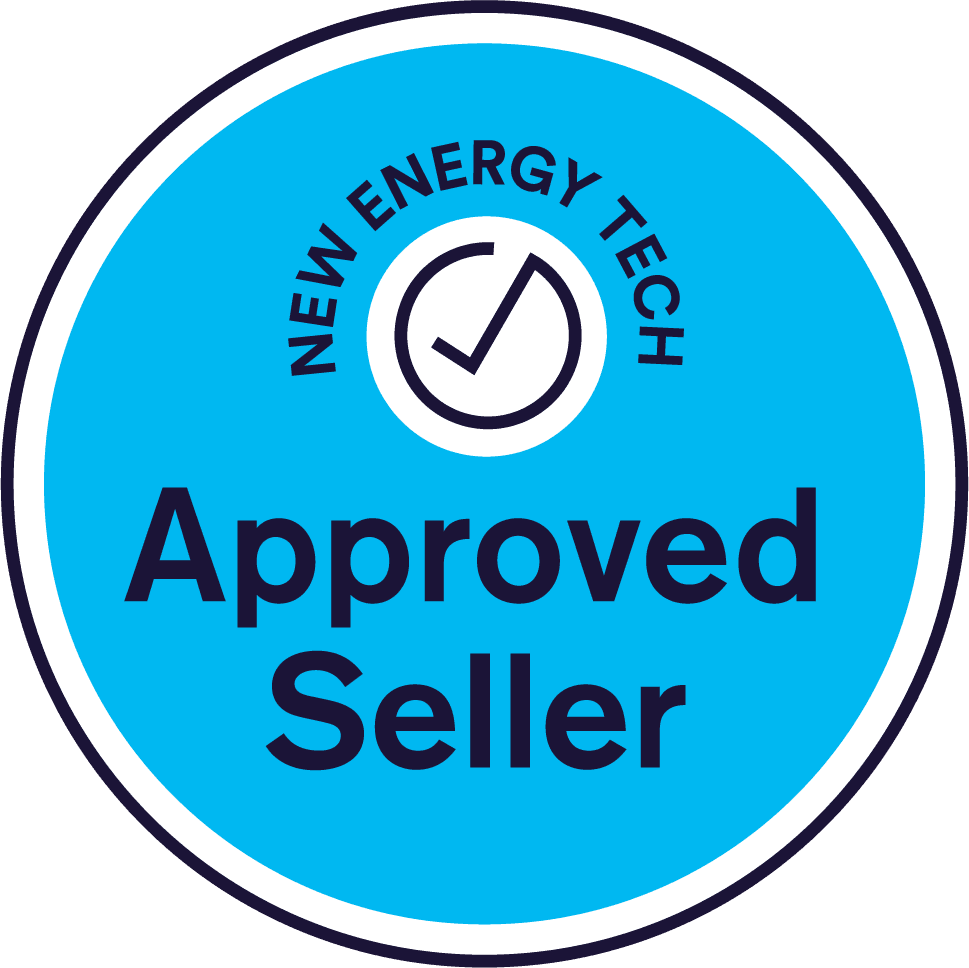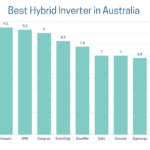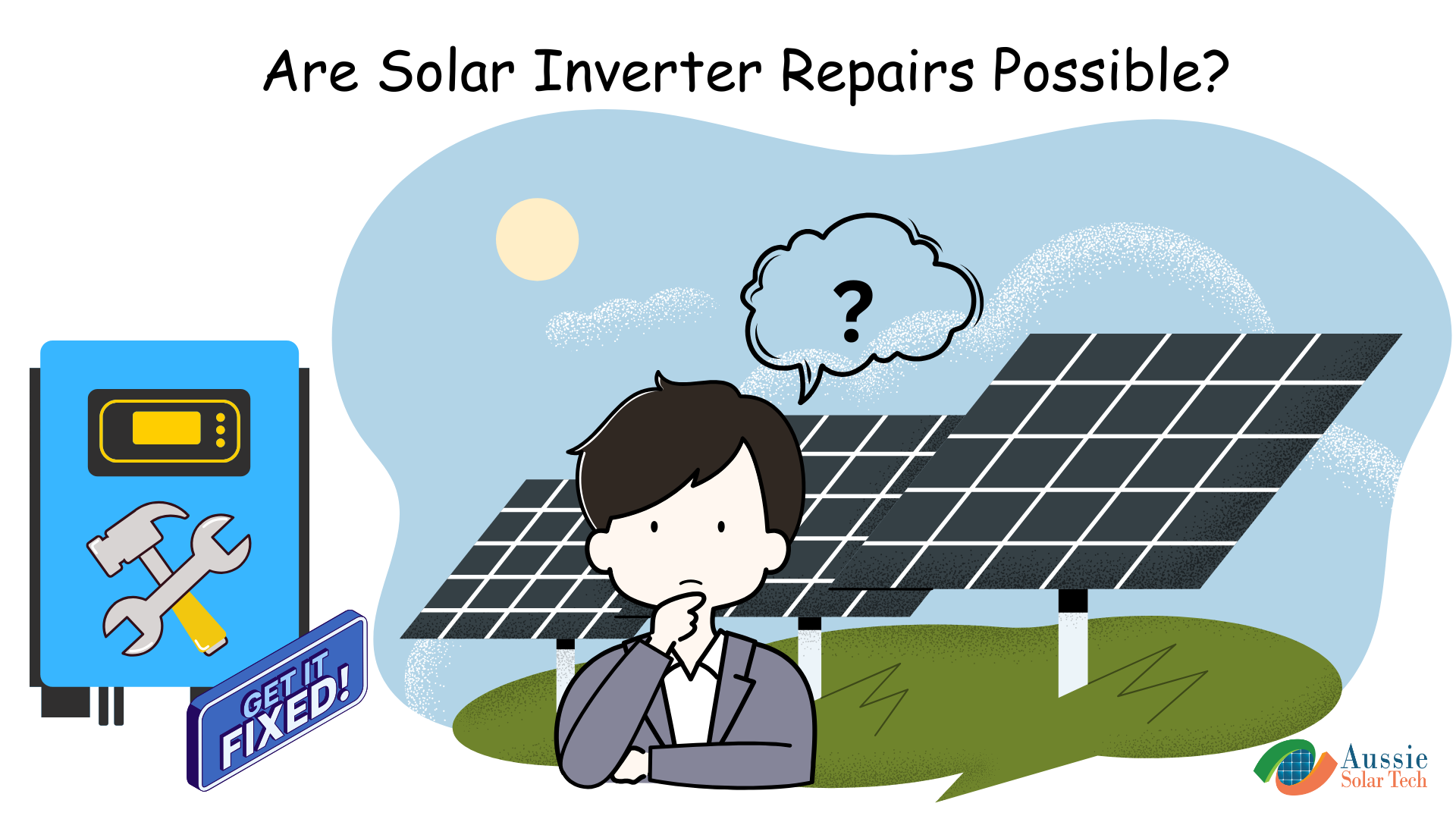Current increasing concern over climate change and rising energy prices across the world, the Australian Federal Government’s solar battery rebate in 2025 can be game-changing for families, small businesses, and community groups who are looking to reduce their electricity bills and carbon footprint. This solar battery rebate offers financial incentives for families, small businesses, and community groups to install solar battery storage. By this rebate Australian Government aims to make clean energy storage more accessible and affordable, and help Australians to reduce their carbon footprint, dependency on the national grid, and maximize solar savings. This article will help you with the program’s details, eligibility, benefits, and practical steps to make the most of this home battery rebate.
About Australia’s Federal Battery Rebate
Australia is a global leader in rooftop solar, with over four million homes equipped. However, only 2.5% of these homes have battery storage, limiting their ability to store excess solar power when needed. As the electricity prices rise, households pay an average of $1,800 annually in 2024. The solar battery subsidy addresses this gap.
The Federal Solar Battery Rebate is a $2.3 billion subsidy scheme by the Australian Government, officially known as the Cheaper Home Batteries Program. It is a nationwide solar battery incentive designed to accelerate battery adoption across Australia to reduce home battery installation costs by around 30%. This government solar battery rebate aims to support over one million new battery installations across Australia by 2030, and it is the expansion of the Small-scale Renewable Energy Scheme (SRES), which has driven solar uptake since 2011.
From July 1, 2025, eligible households, small businesses, and communities can claim a solar battery rebate of up to $372 per kilowatt-hour (kWh) of usable battery capacity. After paying administrative fees, the real-world savings are approximately $330 per kWh. For a standard 10 kWh battery, there will be a discount of around $3,300, significantly lowering the cost of systems that usually take $8,000 to $15,000.
Key Facts: Cheaper Home Batteries Program
- Start: Launching across the country on July 1, 2025
- End: Operates through 2030, with rebates decreasing progressively
- Max Rebate: Rebates are estimated at approximately $372 per usable kWh, equating to about a 30% discount
- Money saved: A typical household could save around $2,300 annually on energy costs with a new solar and battery setup
- Scope: Covers both new and existing rooftop solar installations; eligible for small businesses and community facilities
- Eligibility: Eligible for small businesses and community facilities, with subsidies for batteries up to 50 kWh and total systems up to 100 kWh
- Income Restriction: No income restrictions—accessible to all qualifying households and businesses
Who Can Access The Rebate?
The solar rebate is designed to make clean, affordable energy more accessible to a wide range of Australians.

It’s available for:
- Residential Homes: Homeowners can take advantage of the rebate to install solar PV systems and reduce their energy bills. (Note: This rebate is not available to tenants; only homeowners are eligible.)
- Small Businesses: Eligible small businesses can reduce their operational costs and carbon footprint by investing in solar energy. This support helps local businesses become more sustainable and competitive.
- Community Facilities: Local organizations such as sports clubs, libraries, and community centres can also access the rebate. This helps strengthen communities, lower operating expenses, and showcase local leadership in renewable energy adoption.
💡 Important Note: While homeowners, small businesses, and community facilities are eligible, tenants (renters) are currently not able to access the rebate directly. However, they can benefit indirectly through property owners who invest in solar and pass on energy savings.
Watch a Short Video on Australia’s Federal Solar Battery Rebate
Eligibility Criteria for National Solar Battery Rebate
Let’s see if you are eligible or not:
- System size: Batteries must have 5–50 kWh usable capacity (100 kWh for businesses/community facilities, rebated up to 50 kWh).
- Installation date: Be installed on or after 1 July 2025 (batteries installed from 6 April 2025 may still be eligible as long as the battery has not been commissioned)
- Solar connection: The battery must pair with a new or existing rooftop solar system.
- Approved equipment: Only Clean Energy Council-approved batteries qualify, ensuring safety and performance. Be listed on the Clean Energy Council (CEC) approved product list
- Capable Battery: The battery must be Virtual Power Plant (VPP) capable. Battery must comply with AS/NZS 5139:2019.
- Accredited installers: Installation must be done by or supervised by SAA-accredited installers.
- One per property: Each property is limited to one rebate, though owners of multiple properties can claim for each. Electric vehicles are not eligible battery systems for this program.
- Australian residency: Applicants must be Australian residents or entities, including households, small businesses, and community organizations like schools or clubs.
- Consumers must also receive: Written statements on installation safety and expected energy savings. Compliance documents to meet state/territory regulations
Can the Rebate Be Combined with State Incentives?
Yes, you can combine the federal solar battery rebate with current state battery programs, such as:
1. NSW Battery Rebates and Incentives:
The NSW Government offers upfront discounts and incentives payment to help residents and businesses reduce the cost of installing a solar battery and the creation of a more reliable grid in NSW to start sustainable living. NSW Government’s battery rebates and incentives are:
Peak Demand Reduction Scheme (PDRS): The NSW Government provides battery rebate under the Peak Demand Reduction Scheme (PDRS). This program aims to reduce peak electricity demand, cuts fossil fuel use, and supports NSW’s goal of net-zero emissions by 2050.. It started in 2022 and will end in 2050.
NSW residents can get $1,600 to $2,400 incentives for installing a battery energy storage system in the hone or business. battery installations in new or existing solar systems at your homes or businesses are also eligible for PDRS incentives. So, both solar batteries and home batteries are eligible for PDRS incentives , batteries need to be listed on the approved product list, have a usable capacity between 2 and 28 kWh, and come with a minimum 6-year warranty
Virtual Power Plant (VPP) Connection Incentives:
Under the Energy Savings Scheme (ESS), NSW residents can receive an incentive of $120–$400 for connecting battery storage to Virtual Power Plant (VPP) and it can be claimed twice over a 3-year period. A VPP allows you to sell some of the excess stored energy in your battery when other people on the grid need it most.
2. VIC Solar Battery Interest-Free Loan:
If you’re in Victoria, there are several solar support options available in 2025 to help cut energy bills and make solar more affordable.
Solar Panel Rebate (For Homes):
- Rebate: Up to $1,400 off a new solar PV system
- Optional Loan: Match the rebate with an interest-free loan of up to $1,400
Solar Battery Loan:
- Loan: Up to $8,800, interest-free
- Repayments: $183.34/month over 4 years (starting 30 days after approval)
Requirements:
- The property must already have a solar system with at least 5 kW inverter capacity
- The battery must be at least 6 kWh and VPP-ready
- No previous solar battery rebate received
- A credit check is now required for loan approval
These programs make it easier for Victorians to invest in clean energy while saving money over time.
3. WA Home Battery Scheme:
The WA Government is investing $387 million to help households install battery storage through the new Residential Battery Scheme. If you’re on the Synergy or Horizon Power network, here’s what you could get:
- Synergy customers: Up to $5,000 off ($500 per kWh for up to 10 kWh)
- Horizon Power customers: Up to $7,500 off ($750 per kWh for up to 10 kWh)
- Low-to-middle income households: Access to interest-free loans up to $10,000
The rebate is applied upfront as a discount through participating installers. You can install a larger battery, but the rebate only covers the first 10 kWh
However, spots are limited — only 20,000 households will benefit in the early rollout (19,000 for Synergy and 1,000 for Horizon Power), so applying early gives you a better chance to secure the rebate.
4. NT Battery Scheme:
The Northern Territory Government is helping more households, businesses, and community groups invest in solar battery storage through the Home and Business Battery Scheme. It’s designed to make solar energy more accessible and reduce reliance on the grid.
What’s available?
- From 1 December 2024 to 30 June 2025, eligible applicants can receive:
- $400 per kilowatt hour (kWh) of usable battery storage
- Up to a maximum of $12,000 in grant funding
Who can apply?
- Homeowners in the Northern Territory
- NT-based businesses
- Not-for-profits or community organizations with premises in the NT
Each owner and property is eligible for one application. If you own both a home and a business, you can apply separately for each. However, previous recipients of this grant cannot apply again for the same property.
What does the grant cover?
- Installing a solar PV system with battery storage and an inverter
- Adding a battery storage and an inverter to an existing solar system
- The grant does not cover solar panels or inverters alone without a battery
With these state-based solar battery rebate programs, Australians have more opportunities than ever to invest in clean energy, lower power bills, and build a sustainable future. Don’t wait — explore your options today and start enjoying the benefits of solar battery storage!
How The Solar Battery Rebate is Calculated?
The solar battery rebate is calculated based on your battery’s usable capacity— the amount of energy your home or business can use.
- You’ll get STCs (small-scale technology certificates) for each kWh of usable battery capacity, up to 50 kWh.
- In 2025, this means a discount of about $372 per kWh.
- The value drops each year until 2030, when the program ends.
| Year | Estimated Value per kWh (kilowatt hour) | STC Factor |
| 2025 | $372 | 9.3 |
| 2026 | $336 | 8.4 |
| 2027 | $296 | 7.4 |
| 2028 | $260 | 6.5 |
| 2029 | $224 | 5.6 |
| 2030 | $188 | 4.7 |
*The estimated value per kWh is approximate and based on $40 per STC for a battery installed in the year. This could vary over time in line with reviews of whether the discount remains appropriate.
Tip: If you’re planning to install a battery, do it sooner rather than later because the solar battery rebate drops each year until 2030. Installing in 2025 gives you the highest discount at approximately $372 per kWh of usable battery capacity.
What Will be The Solar Battery Cost After Federal Battery Subsidies Apply?
Here’s what popular battery systems cost after claiming the federal rebate, based on 2025 pricing:
| Battery Brand & Model | Standard Price(including installation) | Price After Rebate | Capacity | Ideal For |
| Tesla Powerwall 3 | $14,850 | $9828 | 13.5 kWh | Large homes |
| Tesla Powerwall 2 | $11,700 | $6678 | 13.5kWh | Large homes |
| Sungrow Battery(SBR096) | $9424 | $5852 | 9.6 kWh | Mid-sized homes |
| Sungrow Battery(SBR128) | $9,942 | $6680 | 12.8 kWh | Large homes |
| Sonnen Batterie Eco | $14,000 | $11,000 | 10kWh | Tech lovers |
| LG Chem RESU 12 | $12285 | $8639 | 9.8kWh | Mid-sized homes |
| Alpha ESS Smile5 | $9,800 | $7940 | 5kWh | Small households |
Find the popular solar battery by Clicking Here
What Affects the Final Price of a Popular Solar Battery?
- System size: Bigger batteries cost more, but it may qualify for a higher rebate.
- Installation complexity: If you have older homes or a switchboard, then upgrades may increase costs.
- Location: Prices can vary depending on the state or regional areas.
- State rebates: Some regions offer extra discounts that can also lower your cost.
How Much Can You Save On Your Electricity Bill After Solar Battery Installation?
Depending on the system and usage profile, the program offers potential savings such as:
- Up to $1,000/year for homes with existing solar
- Up to $2,500/year for homes installing both solar and battery
- $3,336 off the upfront cost of a typical 10 kWh battery
Annual savings for a 13.5 kWh battery system will typically range between $700 – $1,500, with additional savings possible when part of a VPP.
Here’s What You Could Save in 2025
| State | State Program | Government rebate |
| NSW | $1,600 to $2,400 | 372$/kWh |
| VIC | Loan: Up to $8,800, interest-free | 372$/kWh |
Western Australia (WA): WA is stepping up big time! Starting July 2025, their Residential Battery Scheme offers rebates of $500/kWh (up to $5,000) for Synergy customers in the southwest, and $750/kWh (up to $7,500) for Horizon Power customers in regional areas.
Who Can and How to Apply for the Federal Solar Battery Rebate?
The program is operated through the Small-scale Renewable Energy Scheme (SRES). Rather than being a rebate, you will receive an upfront discount from your installer.
So you will not need to apply for the program. The battery MUST be installed with a new solar system or added to an existing solar system. But stand-alone batteries will not be eligible for the rebate. To receive the discount, you must:
- Install an eligible battery with a new solar system or add it to an existing system
- Install the battery with an SAA (Solar Accreditation Australia) approved installer
Household battery growth in Australia
Cumulative number of batteries sold in Australia by quarter from 2020 to 2024.

Why the Solar Battery Rebate Matters for Australians
The home battery rebate is more than a financial incentive; it can play a vital role for Australian households and businesses. Here’s why it’s a big deal:
1. Save energy bills
How would it feel if I told you that you can save up to $1,200–$1,600 annually? Let’s see how you can do so. The batteries store excess solar power that is generated during the day to use it in evening peak hours, when electricity rates are at their highest. A regular household with a 6.6 kW solar system and a 10 kWh battery can save up to $1,200–$1,600 annually, depending on local tariffs. In high-cost regions like South Australia, pairing solar with a battery can reduce your electricity bills by up to 90%. Is it not huge for you?
2. Energy Independence
Power outages are a reality for Australians because of their vast geography, especially in rural areas or during extreme weather conditions like bushfires or cyclones. Under that condition, if you want to keep your home powered for days, you must have batteries. For example, during ex-tropical cyclone Alfred in 2017, homes that had batteries maintained power all day, while others faced outages. This resilience can be invaluable for families in Townsville or businesses in Cairns.
3. Support the Grid
If you have VPP-capable batteries, you can export stored energy to the grid during peak demand. In 2024, VPPs in Victoria saved participants an average of $400 annually with the help of grid payments. The solar battery subsidy makes joining a VPP more accessible.
4. Maximise renewable energy use:
Batteries let you make the most of your solar power by storing what you don’t use during the day for later. This means less wasted energy and more self-reliance, especially in sunny places like Queensland or WA. With Australia aiming for 82% renewable energy by 2030, every stored kilowatt helps. Plus, it’s a smart way to dodge those high night-time rates—your solar works harder for you all day and night!
5. Environmental Benefits
By storing solar energy, batteries reduce the dependency on fossil fuels, which still powered 49% of Australia’s electricity in 2024. The battery adoption could cut national carbon emissions by millions of tonnes annually, supporting Australia’s net-zero ambitions. For eco-conscious Aussies, this is a chance to live sustainably.

Will the Federal Solar Battery Rebate be a Game Changer?
The Federal Solar Battery Rebate cuts 30% off the starting cost, making it a great deal for lots of Aussies who want to add a battery. With power bills going up, solar feed-in payments getting smaller, and battery setup costs coming down, it’s already been a good idea to get a battery, even before this National rebate program started. Need help picking the best battery for your home? Take a look at our Home Battery Comparison Guide or get a free quote from our trusted installers!
Quick FAQs on the Solar Battery Rebate
- What’s the solar battery rebate?
It’s a federal discount of $372/kWh starting July 2025 to make home batteries cheaper for Aussies! - How do I get the rebate?
Your installer applies it for you—just use an accredited pro. - Can I combine it with state rebates?
Yep, you can. - Where do I start?
Check energy.gov.au for details.
Tips for Australian Families and Businesses
- Act early: Increasing the demand may lead to installer shortages. Get quotes now.
- Choose the right battery size: A 6–7 kWh battery suits most households, but consider a larger system (e.g., 13 kWh) for greater savings, and don’t forget that the rebate is a one-time offer.
- Verify installer credentials: Ensure your installer is accredited and uses approved equipment to avoid rebate disqualification. You must be concerned about that matter.
- Explore VPP benefits: Joining a VPP can provide additional income for you by exporting stored energy to the grid.

Potential Challenges and Things to Think Before Solar Battery Installation in Australia 2025
Getting a battery with the solar battery rebate is a great opportunity, but there are some obstacles you might face. Let’s break it down so you know what to expect and how to handle it.
- Finding an Installer Might Take Time: With lots of people wanting batteries in 2025, installers are super busy, especially in places like Tasmania or the outback. This could mean waiting weeks or even months to get someone to set up your battery. To avoid this, start looking for an accredited installer now. Ask around in your area—like in Perth or Darwin—or use websites like Aussie Solar Tech to book early and avoid long delays.
- Watch Out for Tricky Salespeople: Some companies might try to trick you with big promises about savings or say you’ll get more rebate money than you really will. This can happen a lot on social media or cheap ads. To stay safe, always check the facts on the official website, energy.gov.au, or talk to a trusted installer. For example, if someone in Sydney offers a deal that sounds too good to be true, double-check before signing anything.
- Batteries Might Be Hard to Find: Because batteries are popular all over the world, there could be shortages in Australia, too. For this reason, you might have a delay in your installation, especially for big brands like Tesla or BYD. To avoid this, ask your installer if they have stock ready or if they can order it soon. Some people on X have mentioned waiting extra months because of this, so planning is key.
- Rebate Money Will Get Smaller Each Year: The federal government solar battery rebate starts high in 2025 but will go down every year until 2030. If you wait until 2026 or later, you’ll save less money upfront. For instance, a 10 kWh battery might save you $3,300 in 2025, but only $2,500 in 2026. To get the best deal, try to install your battery this year or next. Talk to your installer about locking in the 2025 rate if possible.
- Extra Costs You Might Not Expect: Even with the rebate, there could be hidden costs like extra fees for wiring, permits, or fixing your solar system if it’s old. In regional areas like Broken Hill, these costs might be higher because parts have to travel further. Ask your installer for a full quote that includes everything so you’re not surprised later. Some families in rural Queensland learned this the hard way and had to pay an extra $500!
- Keeping Your Battery Working: Batteries last 10–15 years, but you’ll need to maintain them to get the most out of them. Things like checking the charge level or replacing parts can cost money over time. Most brands like Sigenergy or BYD give a 10-year warranty, but read the fine print to see what’s covered. For example, a friend in Melbourne had to pay $200 to fix a small issue that wasn’t included. Plan for these costs to avoid stress down the road.
- Weather and Location Issues: If you live in a place with extreme weather, like cyclones in Darwin or bushfires near Adelaide, your battery might need extra protection. This could mean spending more on a special setup or insurance. Talk to your installer about how to keep your battery safe, especially if you’re in a risky area. Some homeowners in Cairns added a protective cover for just $100, which was worth it during a storm.
- Learning How to Use It: A new battery might feel tricky at first, especially if you’re not used to managing solar power. You’ll need to figure out how to charge it, use the stored energy, or join a Virtual Power Plant (VPP). Some older folks in Geelong found it helpful to get a quick lesson from their installer. Don’t worry—most companies offer support, and there are online guides to help you get started.
By keeping these challenges in mind and planning, you can make the home battery rebate work smoothly for you. Start early, ask lots of questions, and use trusted resources to get the best result for your home in Australia.
You can watch the video on Solar Battery Rebate covered by ABC News
Let’s Wrap It Up: Your Path to Solar Savings with Aussie Solar Tech
So, the federal government solar battery rebate starting July 1, 2025, is like a golden ticket for Aussies looking to make the most of solar power. With discounts of $330 per kWh, you can snag a battery, like a Tesla Powerwall, for $6,045 in WA after rebates—and start saving on your bills, whether you’re in bustling Sydney or a quiet town like Margaret River. It’s not just about the money, though batteries give you peace of mind during blackouts, help the planet, and even let you earn extra cash through VPPs.
We’ve compared top brands like Tesla, BYD, and Sigenergy, and shown how you can stack federal and state rebates to save even more. Sure, there might be a few bumps—like finding an installer or watching out for sneaky ads—but with a little planning, you’ll be set. At Aussie Solar Tech, we’re here to help you every step of the way. Let’s make 2025 the year you take charge of your energy—grab that solar battery rebate and start saving today!
Shah Tarek is a Solar Energy Consultant with 10 years experience in solar system design and solar consultancy field at Australia. He is now a Director, Operation & Consultancy Division at Aussie Solar Tech, a leading Australian solar retailer and installer. Here he is writing informative and engaging solar content that educates the community on the benefits of solar power. His work supports Aussie Solar Tech’s mission to promote sustainable energy solutions and foster a greener future for Australia.

